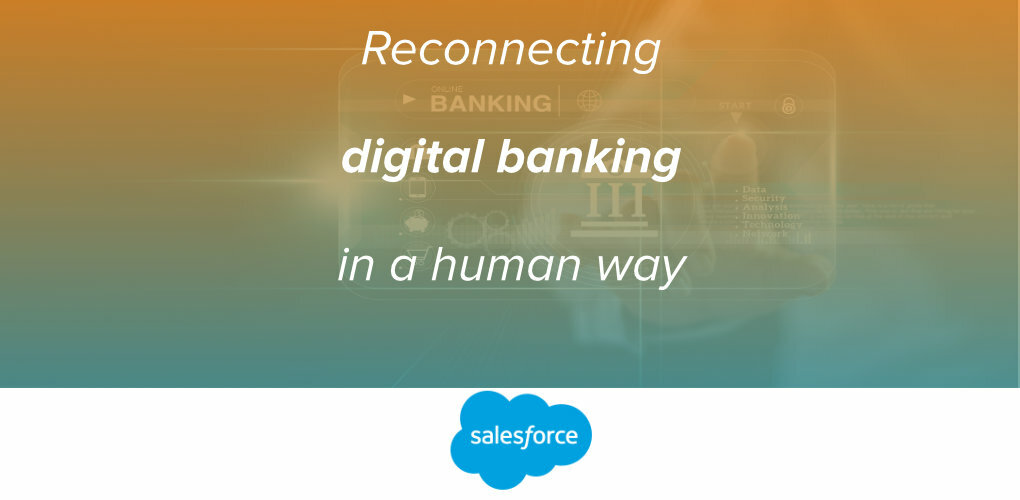
Insights & Opinions
Reconnecting digital banking in a human way
Tue, 04 May 2021


Can banks provide digital services in a human and connected way? To answer this question on April 29th, we got support from Cyril Cymbler, Head of Financial Services Industry Advisors - EMEA, Salesforce and Stijn Cloet, CEO of Axepta by BNP Paribas Benelux.
We spoke about data integrity, the need for a uniform customer experience across all channels and the magic of data insights. We discussed the changing perception of trust and we learned how all this led to BNP Paribas setting up Axepta to be a full-fledged acquirer to better serve their B2C clients.
The essential conclusion was that providing digital services in a human and connected way requires banks to understand their customers' expectations of banking services, how these expectations change in a digital transformation and to act upon those expectations.
Building trusted relationships during a pandemic
People are not against technology. There may be some resistance at the start; that is a natural reaction against change. Once people feel and experience the advantages of the new way of working, they adapt. We saw that with contactless, and we see it now with video banking (remember Klaas Ariaans, Managing Director Personal Banking at ABN AMRO, in a previous session?).
Cyril observed that banks did an excellent job in supporting their clients during the pandemic "by providing a higher level of service linked to some tech capabilities, such as videoconferencing, screen sharing, automatic signature, etc. They have tried to do something here."
Now, banks should look beyond that, and “try to augment their relationship manager through AI, through collaboration tools, through a customer 360-view of the customers. They must balance the human touch with technology by enhancing the capability of their relationship managers."
When every certainty around them crackles down in a pandemic, people need to feel safe and secure at their bank, without negative surprises. Cyril: "What is important for banks is how to build trust with their customer in difficult times. If you have some unexpected events in your life, like losing your job, how can I show you that you can rely on me even in difficult times? I think this is really where the digital banks want to go, and some did a good job. Others have much work to improve that."
Stijn added that "the mere fact to have a physical network is not what makes a difference, but the presence is there and the extent to which you can be available for advice. The relationship between clients and banks certainly has changed following this pandemic. And I think having some physical presence can make a difference."
The shift from the trusted advisor to the trusted bank
From the audience came the comment that trust is gone because the contact with the financial advisor is lost. In the past, there was one phone number to talk to your trusted advisor, the one you knew for many years, and that solved all your financial problems.
Today everything is different. Gone are the days that you had one personal advisor for all your problems at most banks. Waiting for an answer to an urgent question you raised online can take days.
Of course, banking became more complex, and financial advisors need to be better trained to provide the right level of services, as Stijn explained. "The bank is an institution that people trust. Otherwise, I don't put all my money there. I cannot step into a branch office and have all my services served by one person because products become more complex, needs have become more complex. It put the bar higher, and so that's why I can't talk to the same person about mortgage loans, insurance, investments and so on."
Looking at the future, Stijn believes that AI can make sure that banks maintain the right level of advice with people that understand the personal situation of the customer in front of them.
Suppose video banking can be augmented with a 360-view of the customer in real-time, banks have a tremendous asset to serve customers better and to fulfil their expectations during the conversation.
The value will grow even further, in Cyril's opinion, with the massive data input through models like bank-as-a-platform (BaaP) and bank-as-a-service (BaaS). Banks will augment their value by providing complete customer journeys (BAAP) through integrations with third-party services, or they will excel in specific needs (BaaS) and ensure product delivery whenever and wherever the customer needs it, through APIs.
What is your omnichannel single truth?
Banks work in silos. They think in silos, and still, too often, they build channels in silos. That is a problem. For too many institutions, an omnichannel approach is equal to an omnisilo approach, resulting in a lack of data integrity. That is problematic for a bank that wants to provide digital banking services in a human and connected way.
Cyril explained this with the example of someone that asks for mortgage advice in a bank branch and finds conflicting information later in his internet banking environment. "What is the truth? There is a break in the customer experience. Although most of this information may be accurate, but only one should be communicated to the customers", he explained. "The common denominator of all the banks to balance the human and the digital experience was to provide a single source of things. They need to break the silos."
It is also in this context that BNP Paribas decided to become an acquirer as they observed that digital payments realise 80% of the turnover of their B2C customers. Axepta was the answer to serve these customers better.
"It's about proximity and integrating payments, both in-store or online, as well as in the company. Governance afterwards is a disconnected thing where our merchants and our customers have much work to integrate the money coming in and reports coming in," Stijn explained.
"Behind payments, there's much data, and there's much reconciliation that needs to be done. We're convinced that by being present there as a bank and acquire with our customers, we can create this customer intimacy. We can help them out to solve a real problem they have on their finance side, get closer to them, give them some data and start working on that into a very close relationship."
By walking the extra mile to become an acquirer instead of a reseller, BNP Paribas remains the owner of the processes, the products and product development. If they see specific needs and trends in the market (and we know there are many), they can swiftly answer them because they don't depend on third-party platforms or development planning.
"Bigger guys, real big players, have issues that will not be solved if my bank is only a result of another product in terms of reporting, prepared data structure files, and stuff. It's a bit boring stuff to implement. But when you do so, you'll see some real magic that we as a bank can do. We can solve problems, and we can save a significant number of workload and hence FTEs and our customers. That's where we can make the difference."
Conclusion
We are currently in a paradigm shift on how banks are maintaining a trusted relationship with their customers. The most visible shift is digital transformation, but perhaps even more important is the complexity of banking products and services today.
Alignment and expert advice on these products require more technology and a deeper transformation than what most banks had thus far.



